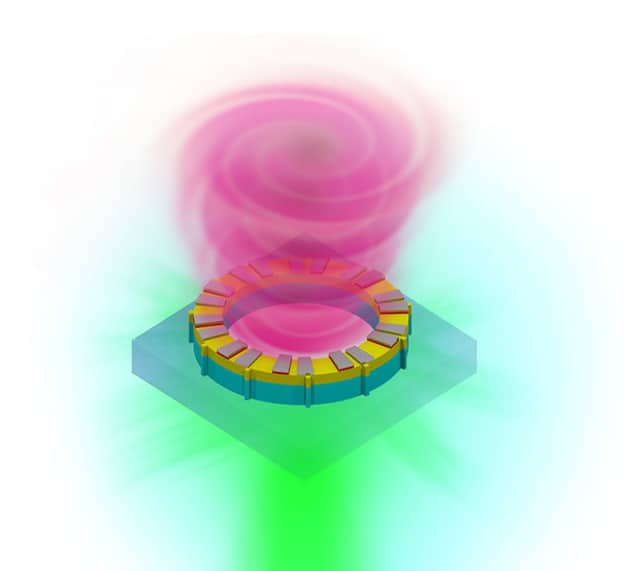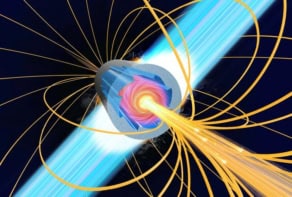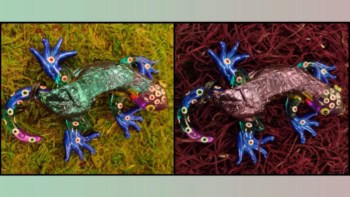
A tiny laser that emits “twisted light” has been unveiled by researchers in the US and Italy. Measuring just 9 μm across, the semiconductor device can produce a beam of light that carries orbital angular momentum. While improvements are needed before the laser can be commercialized, it could someday be used to boost the bandwidth of optical-telecommunication systems. Twisted light could also find use in quantum computing and quantum communications.
In a beam of light with orbital angular momentum (OAM), the wavefront of the light’s electric and magnetic fields twists around the direction of propagation, creating a vortex in the middle of the light beam. OAM occurs in well-defined and unique modes, and researchers have already created prototype optical-telecommunication systems that use these modes to transmit information. The ability to use several different modes at the same time could increase the amount of data that can be sent along an optical fibre. Physicists have also shown that the OAM of single photons can undergo quantum teleportation, and OAM could someday be used to transfer quantum information in quantum computers and quantum-cryptography systems.
But before many of these applications can come to fruition, researchers must work out how to miniaturize OAM lasers and integrate them into optical chips – most OAM sources available today are too bulky and not compatible with semiconductor-based optoelectronics.
Clockwork laser
Now, Liang Feng, Natalia Litchinitser and colleagues at the State University of New York at Buffalo and the Polytechnic University of Milan have created a tiny OAM laser that comprises a ring of semiconductor material with outer and inner diameters of just 9 μm and 7 μm, respectively. The ring is about 1.5 μm tall and sits on a semiconductor substrate. The top surface of the ring resembles a clock face with “tick” marks at regular intervals made from two different materials (see figure).
This structure is known as a “microring” – and it is well known that laser light will circulate within such a ring when the device is “pumped” using an external laser. In a conventional microring, however, the light will circulate in both clockwise and anticlockwise directions. Each rotational sense carries equal and opposite OAM, which effectively cancel each other out in the light emitted by the laser.
This is where the clock-face pattern comes in. The materials used to create the pattern are chosen to have specific indices of refraction such that light can only flow in one direction. The outer wall of the microring also has a periodic modulation of the refractive index, which causes the circulating light to propagate upwards and emerge from the ring and into free space.
State-of-the-art suppression
The laser produces infrared light in a specific OAM mode, and Feng says that the laser has a sideband suppression ratio of approximately 40 dB. This is a measure of the quality of the laser light, which he describes as state-of-the-art for microring lasers. However, he also points out that the laser is currently driven by an external source of laser light – which is not practical for commercial devices for optical telecommunications. He says that the team is now working towards more practical devices that are driven by electrical signals. One goal of the researchers is to create OAM lasers that can be integrated on an advanced signal-processing chip.
An important shortcoming of the laser is that an individual microring laser can only output one OAM mode. Therefore a selection of different lasers would be required to encode data in different modes. Feng says that creating a single ring that can output different modes on demand would require further research and development.
The microring laser is described in Science.


